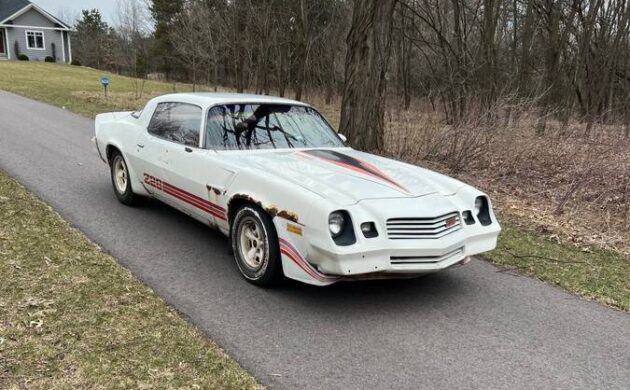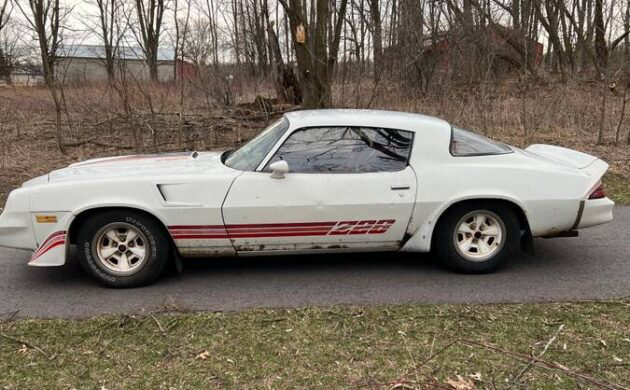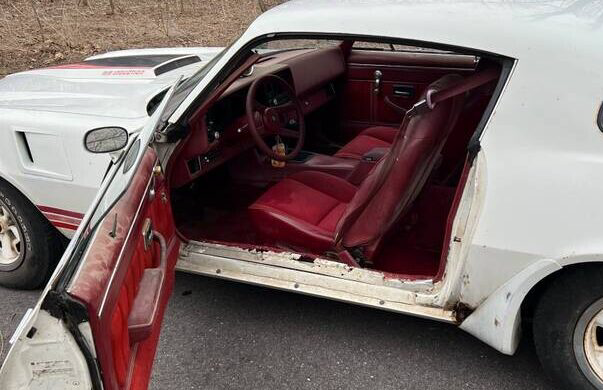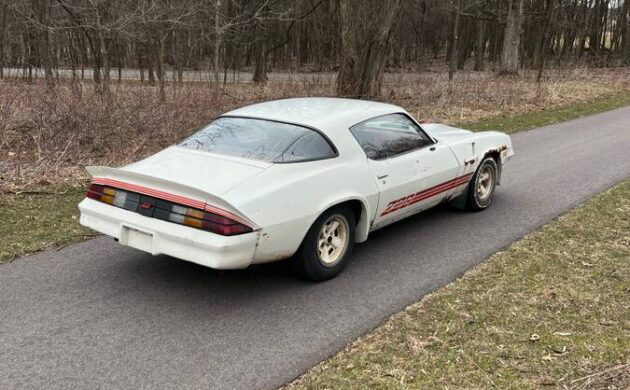Enthusiasts hope that the supply of desirable classics unearthed in barns and sheds will never end, and this 1980 Camaro Z28 confirms plenty of hidden gems are awaiting TLC. It recently emerged after spending thirty years in storage, and it needs a new owner to drag it back from the brink. It runs and drives, with the seller including a collection of parts to help the new owner on their restoration adventure. The Camaro is listed here on Craigslist in Portage, Wisconsin. The seller set their price at $6,000, making it a potentially affordable project candidate. I must say a big thank you to Barn Finder Rocco B. for spotting this beauty.
Many American models that emerged at the start of the 1970s showed impressive longevity. Although part of this was planned, some of it was a matter of necessity. The Second Generation Camaro is a perfect example because Chevrolet’s product planning included introducing an all-new replacement in the decade’s second half. However, it spent considerable time grappling with legislative changes, deciding to evolve the existing model and taking the lessons learned into a new model in the 1980s. This 1980 Z28 includes many of those evolutionary changes, although more followed during the final production year of 1981. This car recently emerged after thirty years in storage, and the photos confirm it needs love. Its Code 11 White paint has not aged like fine wine, looking tired and weatherbeaten. Growing areas of surface corrosion are consuming it, although the poor photo quality makes it difficult to determine how much of that corrosion is about to become fully-fledged penetrating rust. It is a similar story below the surface, suggesting an in-person inspection could be warranted before potential buyers commit too heavily to this classic. However, with the seller describing the Camaro as solid, the indications are positive. The car retains its correct wheels and spoilers, and the glass is in good order. A collection of parts is included to help the buyer on their restoration journey, and as any enthusiast will confirm, such inclusions are always welcome.
Chevrolet sold 152,005 Camaros in 1980, with 45,137 buyers selecting the Z28. If a buyer wanted a 350 under the hood, that was the only available path. This one features its numbers-matching 350, backed by the desirable four-speed manual transmission. It is easy to underestimate the benefits of the manual transmission, but the stopwatch tells the story. With a three-speed automatic handling the shifting duties, the journey down the ¼-mile would take 16.6 seconds. With the driver tackling the task via the manual option, that figure falls to 16.1 seconds. After decades of hibernation, the seller revived this small-block, and they say it feels strong. The Z28 runs and drives, although it is unclear whether it is roadworthy. If it isn’t, reaching that point might be straightforward.
The interior shots supplied in the listing are low-quality, making it hard to draw firm conclusions on some aspects of the interior condition. The original owner ordered it trimmed in Red cloth and vinyl, and it appears the interior might be complete. It would be worth the effort for the buyer to clean everything thoroughly, but I suspect they may compile a long shopping list of required parts if they wish to return the interior to its former glory. The damaged door trims, armrests, and driver’s seat wear suggest a trim kit may be the best option. They may need to replace the pad because someone has bolted aftermarket gauges to the dashtop. It is unclear whether there are any other additions, but if potential buyers negotiate an in-person inspection, this aspect of the car shouldn’t escape their attention.
By 1980, it was apparent that the production life of the Second Generation Camaro was drawing to a close. Classics like this were treated harshly by the combination of stricter emission and safety regulations, and it would take an entirely new model to address the freefall. A new generation of enthusiasts views vehicles like this positively, considering them an affordable entry point into the classic world. This one needs love, but only an in-person inspection will determine whether its rust issues are more than skin-deep. If the car is structurally sound, its restoration could be a satisfying process. Is it one you might consider tackling?












Well, if (and only if) it has little or no rust issues on the chassis, it might fetch around $4G. There’s a lot of work here, just to bring it to driver-grade status. Multiple of 3 when you are calculating restoration cost, based on what we see here. On the plus side, these later gen-2 F-bodies are still slightly undervalued, so go nuts, if that’s what you want.
This is an F-body car- Subframe in front, unibody in the back, very prone to rust and this one has rust, very expensive to repair
That rust runs deep my fellow gearheads. That frame and floor pans are likely swiss cheese. These are taking off in value but not gonna be worth what you have in it when or if it can ever be completed. You can still get a pretty tall one for $30 to $40K and never have to worry about the hidden rust worm reproducing from somewhere within!
I agree with pl.It’s a little on the high side and WI winter’s are not kind to vehicles.The 4 speed is cool even though I think it’s a Saginaw which are good for low power stock engines but put anything stout in front of it and it will grenade once the beatings start.Ask me how I know .glwts.
If it’s not a bondo bucket bubbler, might have a chance. But I find it hard to believe there isn’t significant rust underneath given the rust you can see. And these being unibodies, that can be very problematic.
Sorry, partial unibodies. They have a front subframe and then unibody in the rear. But if those subframe mounting points rust, that can be a real headache to get right.
I am concerned about rust when you don’t see any on Camaros like this and when you see a tiny spots here and there look very hard and deep to see what your getting into. When I see this much it’s run away!
There were SO MANY of these prowling the streets in the 80’s. Amazing that they are so seldom seen today.
I could be wrong, but I believe the 4 spd was only available with a 305 except in Canada. Feel free to correct me if so. But rust is surely the main problem with this.
One plus is that it was the last year before the computer took over. 1981 cars were pretty problematic with them in the first year.
Judging by the picture distance, the seller must think the car is a 20 footer. Too bad they are wrong.
Boy I bet the panel under the rear bumper, spring mounts, subframe mounts, floors and lots of other hidden things are crusty, crispy, flaky. Blow on the brake lines and they sweat fluid with joy. I guess these are hot, deep pockets needed here. Considering the way the climate issue and gasoline powered cars are heading things like this are doomed to the tar pits as are most old cars.